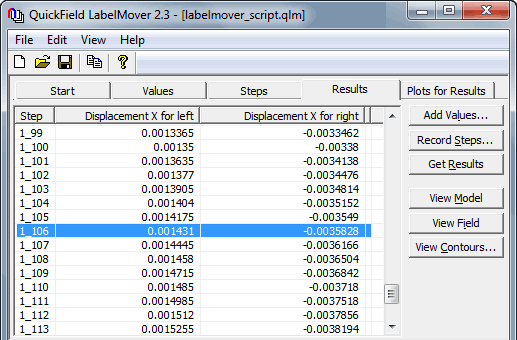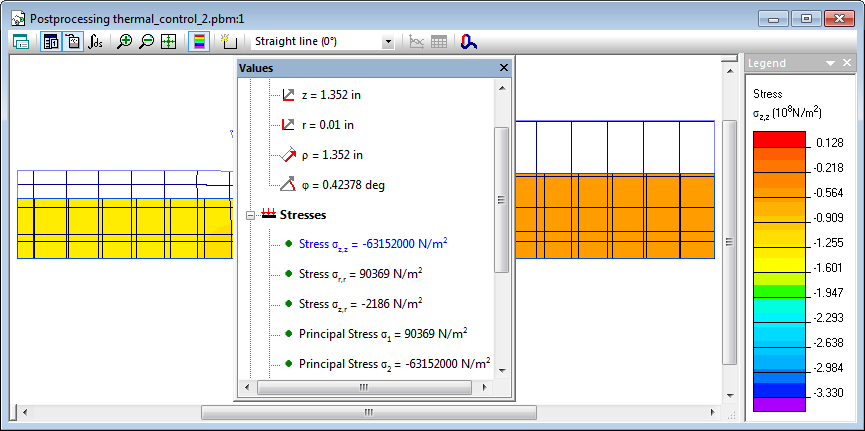Thermal control
QuickField simulation example
The bimetallic thermal control is made of a brass bar and magnesium bar. The bars are arranged so that there is the gap between their ends at room temperature.
Problem Type
Axisymmetric problem of stress analysis
Geometry
Given
Brass bar length Lb = 0.75";
Young's modulus of the brass Eb = 15·106 psi (103 GPa);
Thermal expansion coefficient of the brass αb = 10·10-6 1/°F (18·10-6 1/K);
Magnesium bar length Lm = 1.3";
Young's modulus of the magnesium Em = 6.5·106 psi (44.8 GPa);
Thermal expansion coefficient of the magnesium αm = 14.5·10-6 1/°F (26.1·10-6 1/K);
Initial distance between bars δ=0.005".
Task
- Calculate the temperature increase at which the two bars come into contact;
- Calculate the stress σ in the magnesium bar when the temperature increase is ΔT = 300 °F (167 K)
Solution
First part is solved using serial analysis capability of LabelMover. Temperatures of the bars rise with the step of 1 K. Elongation of the bars is calculated for each temperature. The bars come into contact when the total elongation of bars reaches δ. This way the temperature of the contact T1 is determined. There is no stress in the bars before the contact takes place.
The second part simulates bars after they came into contact. The deformed (elongated) bars geometry is used. In this problem the temperature increment T2 = ΔT - T1 is applied to the bars.
Results
Temperature at which the contact takes place: T1 = 106 K (191 °F)

Thermal stress at temperature T2 = 300 - 191 = 109 °F (61 K).

| Contact temperature | Stress in the magnesium | |
| QuickField | 191 °F (106 K) | 9170 psi (63.2 MPa) |
| Theory* | 190 °F | 9680 psi |
| Difference | 0.5% | 6% |
*James M. Gere, Stephen P. Timoshenko "Mechanics of materials", Third edition (1990), pp.26-27. ISBN: 0-534-92174-4.
- Video: Thermal control. Watch on YouTube.
- View simulation report in PDF
- Download simulation files (files may be viewed using any QuickField Edition).